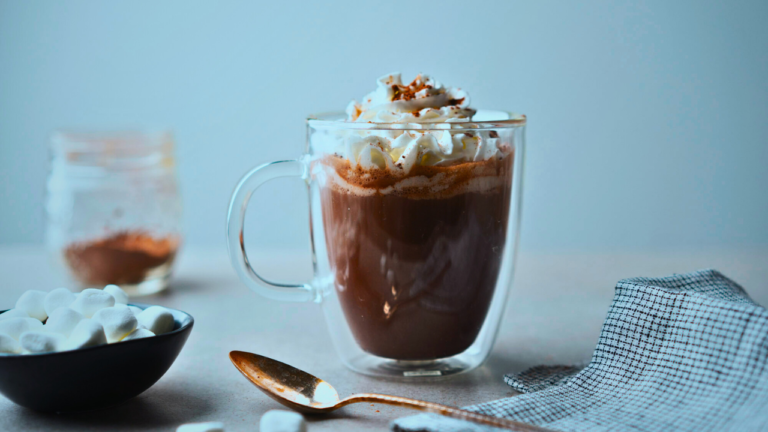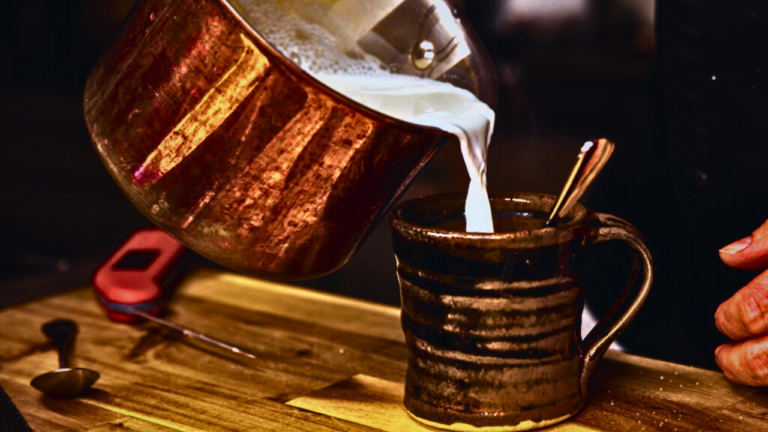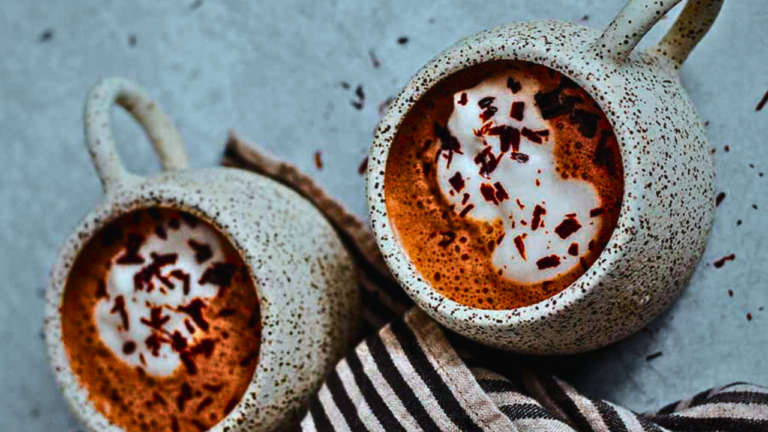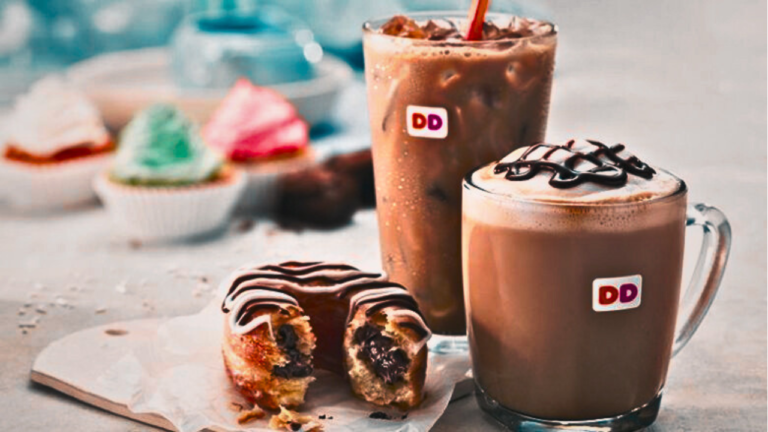Can You Put Hot Chocolate In A Plastic Cup?
Does the cold weather have you reaching for a comforting cup of hot chocolate? With a cosy blanket, your favourite movie, and a mug of this warm beverage, winter nights can certainly become much more enjoyable. But wait, what if you don’t have a traditional mug or anything but a plastic cup? Are you wondering, “Can I put hot chocolate in a plastic cup?”
You might be surprised that there’s a lot to consider when pouring hot drinks into plastic cups. From the type of plastic to the temperature limit, there are many factors to think about. We’ll guide you through these considerations to ensure your hot chocolate experience is safe and comforting.
Remember, safety and enjoyment should always go hand-in-hand when savouring your favourite hot drinks.
- What is the temperature resistance of plastic cups?
- Can hot chocolate warp or melt a plastic cup?
- Are certain plastic cups safe for hot liquids?
- What are the potential health risks?
- What are better alternatives to plastic cups for hot chocolate?
With the right guidance and information, you can make well-informed decisions about your hot chocolate habits. Let’s dive into the details!
Read also: Is Hot Chocolate Powder The Same As Cocoa Powder?
What temperature can plastic cups withstand?
You might have asked yourself before, “How much heat can a plastic cup really handle?” Well, the answer to that often depends on the type of plastic being used for the cup. However, generally speaking, most common types of plastic cups begin to soften when exposed to temperatures of about 160–170 °F (71–77 °C) and can deform or melt at around 200°F (93°C) or higher.
Take polystyrene, for instance. It’s a commonly used plastic for disposable cups, plates, and food containers. While it can stand minor heat, it starts to soften at temperatures around 212°F (100°C), which is basically the boiling point of water.
Don’t forget about polyethylene terephthalate (PET) plastic too, another popular choice for beverage cups. PET starts to soften at around 176°F (80°C), but can resist deformation until temperatures rise to 500°F (260°C). Although it’s important to keep in mind, that’s under perfect laboratory conditions and not necessarily representative of typical household use.
In most everyday scenarios, you won’t be dealing with liquids hotter than boiling water. As such, the chances of any catastrophic melting incident with your plastic cup are slim if used for brief durations. However, ‘softening’ can still occur with prolonged exposure to hot liquids, potentially altering the shape of your cup.
But remember, temperature isn’t the only factor at play. The duration the plastic cup is exposed to heat can also impact the cup’s ability to hold shape and withstand deformation. Consequently, even a mild yet prolonged heat exposure could cause the plastic cup to deform.
Is hot chocolate hot enough to melt or deform plastic cups?
As an ardent fan of that frothy, velvety, and sweet cup of hot chocolate, you may wonder: “Is my hot chocolate hot enough to wreak havoc on my beloved plastic cups?”
Let’s break this down, shall we?
Typically, hot chocolate is served at temperatures ranging from 160°F (71°C) to 185°F (85°C). On the other hand, standard plastic cups start to soften around 100°C and can melt at around 160°C. However, these are general figures and can vary depending on the specific type of plastic used in the cup.
Note: It’s important to remember that although your plastic cup may not visibly melt, it could become softer or change shape slightly at these temperatures. This can lead to spills or possibly lead to the cup failing completely.
Now, although the numbers might initially cause fright, take a deep breath. This does not mean that pouring hot chocolate into a plastic cup will cause it to instantly melt or sag dramatically. The heat transfer from the liquid to the cup takes time, and as you consume the hot chocolate, the liquid will gradually cool down, reducing the likelihood of the cup sagging or deforming.
But we hear your worry. Some of you might be musing, “Alright, but what if I leave my hot chocolate in there for a long time?”.
Well, if hot chocolate is left for an extended period, its heat could potentially lead to the plastic cup softening or altering in shape. But in everyday practical scenarios, this is rather unlikely. Hot chocolate is usually consumed soon after being poured and does not stay hot for a very long time. Remember that it’s always best to consume your hot chocolate promptly, not just for the sake of your cup but also for the unparalleled pleasure of a warm, soothing sip!
All that said, it’s worth being mindful of the potential perils of using plastic cups for your favorite hot drink, as there may still be some risks.
Are there specific types of plastic cups that are safe for hot liquids?
Indeed, not all plastic cups are created equally. Some types of plastic are more resistant to heat and are thus more suitable for hot beverages like hot chocolate. Here’s what you need to know:
- Polystyrene (PS), polyethylene terephthalate (PET, PETE), and polypropylene (PP) are three commonly used types of plastic for hot beverage cups. They are generally considered safe.
- Of the three, polypropylene (PP) is the most heat-resistant. It’s often used in microwaveable plastic containers, making it a solid choice for hot drinks as well.
- Polystyrene (PS) can withstand temperatures up to 175°F (79.4°C) before beginning to soften. So, it’s suitable for hot chocolate or coffee, which are usually served at temperatures between 120°F (48.9°C) and 160°F (71.1°C).
- Polyethylene terephthalate (PET or PETE) is largely safe for hot beverages, but it may begin to warp or deform at temperatures above 140°F (60°C).
Remember: Plastic drinking cups should generally show a number within a triangle on the bottom; this depicts the type of plastic used. Polystyrene is often labeled with a “6,” Polyethylene Terephthalate with a “1,” and Polypropylene with a “5.”
Lastly, it’s worth noting that while these types of plastic may withstand the heat of hot chocolate, they may not be the most eco-friendly.
What are the potential health risks of consuming hot chocolate from a plastic cup?
Drinking hot chocolate from a plastic cup could have some health implications. The heat is the culprit, stirring up potentially harmful chemicals from some plastics and possibly releasing them into your beloved hot chocolate. Let’s delve deeper into these health risks so you’ll be more informed about your choices.
Bisphenol A (BPA):
BPA is found in polycarbonate plastics, and it’s notorious for its potential negative health effects. Although it’s usually safe with cold or mild-temperature content, with hot drinks like your hot chocolate, the story may unfold differently. Some studies suggest BPA might leach into your hot chocolate, and prolonged exposure may lead to potential health issues. These could include disrupted hormonal balance, heart problems, and even an increased risk of certain types of cancer.
Phthalates:
Polyvinyl chloride (PVC) plastics often contain phthalates, which could also make their way into your hot chocolate. There’s growing concern among health experts about possible health risks tied to phthalate exposure. These may include hormonal disturbances and, in some cases, developmental issues in children.
The Microplastics Menace:
As the name suggests, microplastics are tiny plastic particles either broken down from larger pieces over time or manufactured small. There are apprehensions that they may seep into your drink when you use a plastic cup for hot beverages. Though research is still ongoing, there are growing concerns that these tiny, almost invisible particles may pose health risks when ingested regularly.
Note: It’s worth mentioning that not all plastic cups will contain these substances. Look out for markings or labels on the cup indicating they are free of these chemicals to ensure they’re safe. Additionally, the occasional use of a plastic cup for your hot chocolate might not be as hazardous as repeated use.
In conclusion, while it may be convenient, frequently drinking hot chocolate from a plastic cup might pose certain health risks due to possible chemical leaching. It’s best to be aware of these risks and make an informed decision to protect your health. Be sure to seek alternatives when possible and look for plastic cups that are labeled safe for hot liquids.
Are there any recommended alternatives to using plastic cups for hot chocolate?
Given the environmental implications of using plastic cups for hot liquids like chocolate, it’s important to explore alternatives. From a practical standpoint, other types of cups have superior heat-retention properties and do not run the risk of deforming at high temperatures.
Ceramic Mugs
Considered a top-notch choice for serving hot beverages, ceramic mugs offer a number of benefits. Their thick walls provide excellent heat retention, ensuring your hot chocolate stays warm longer. What’s more, they are dishwasher-safe and come in a variety of styles and sizes to suit your preferences.
Glass Cups
If we are talking about a purely aesthetic experience, glass cups steal the spotlight. These allow you to enjoy the rich, creamy texture of your hot chocolate while also keeping it hot. Be sure to choose a tempered glass cup, as these are specifically designed to withstand hot liquids.
Stainless Steel Travel Mugs
On the go? A stainless-steel travel mug is your best bet. Engineered with double-wall vacuum insulation, these mugs keep your hot chocolate piping hot for hours. A bonus is their spill-proof lids, which prevent any messy accidents during commuting.
Insulated Tumblers
Insulated tumblers have become trendy for both hot and cold beverages. They work incredibly well to maintain the temperature of your hot chocolate, and they often come with a secure lid to prevent spills.
So rest assured, there are plenty of safe and practical alternatives to using plastic cups for hot chocolate. Making a conscious choice to switch can enhance your hot chocolate experience while also supporting the health of our planet.
Conclusion
Now that you’re equipped with comprehensive knowledge about the potential issues with using plastic cups for hot chocolate, you’re likely more prepared to make wiser decisions. Although it might be convenient to grab a plastic cup, remember, it’s not merely about the temperature plastic can withstand or whether hot chocolate can deform it. It’s also significantly about your health and the possible harmful consequences the plastic may have.
Specific types of plastic cups can indeed handle hot liquids, like hot chocolate, but it’s essential to always check if they’re labeled as heat-resistant or not. Notwithstanding, there will always be a lingering question about the safety of even these supposedly safe plastic options.
The health risks associated with consuming hot chocolate or any hot beverage from a plastic cup are way too serious to ignore. Plastic cups may contain harmful chemicals like BPA and phthalates, which can leach into your drink when heated, posing potential health risks.
On a happier note, you have plenty of alternatives to enjoy your delicious hot chocolate without compromising on taste or health. Ceramic mugs, glass cups, stainless steel travel mugs, and insulated tumblers are laudable choices. Depending on your needs and preferences, these alternatives offer the coziness of a hot drink, assurance of safety, and even convenience for those on the go.
In a nutshell, yes, you can put hot chocolate in a plastic cup, but the real question to consider is, should you? Your health and wellbeing are worth far more than the convenience of a plastic cup. With the multitude of safer alternatives available, there’s really no need to settle for less.
So the next time you’re reaching for that plastic cup for your hot chocolate, pause for a moment. Consider the information we’ve discussed in this article and choose wisely. After all, a good cup of hot chocolate should warm your soul, nourish your body, and not leave you worrying about potential health risks. Cheers to safer and yummier hot chocolate experiences!
FAQs
Is it safe to microwave a plastic cup with hot chocolate in it?
Not all plastic cups have text indicating they are meant for hot liquids, and always follow manufacturer recommendations.
Is it better to use plastic or styrofoam cups for hot chocolate?
Given the choice, a heat-resistant plastic cup would be a safer bet, as styrofoam can also release chemicals when exposed to hot beverages.
What is the best alternative to a plastic cup for hot chocolate?
A ceramic mug, glass cup, stainless steel travel mug, or insulated tumbler are all excellent alternatives, as they are designed to handle hot drinks without any chemical concern.
Why isn’t there a standard answer for whether it’s safe to use plastic cups for hot beverages?
There are many types of plastic, and they all respond differently to heat. It also depends on the specific making process of the cup, how hot the beverage is, and how quickly it’s consumed.
Can little kids safely drink hot chocolate from plastic cups?
Yes, assuming the cup is safe for hot liquids. However, always make sure the hot chocolate is cooled down sufficiently to avoid burns.
Can hot chocolate leave a permanent stain on a plastic cup?
Yes, particularly on lighter-colored plastic. Hot chocolate can leave stubborn stains when not washed off immediately.
Do all types of plastic leach harmful substances when in contact with hot liquids?
Not all, but certain types of plastic contain BPA or phthalates, which can leach into the beverage when heated. Look for “BPA-free” or “phthalate-free” statements on the product.

Welcome to the delightful world of “Hot Chocolate Brew,” where the art of crafting and savoring hot chocolate takes center stage. I am Smith Karen, your guide on this indulgent journey through the rich and velvety universe of hot chocolate. As a passionate enthusiast of this comforting elixir, I am thrilled to share my insights, recipes, and experiences with fellow connoisseurs and those eager to explore the diverse realm of hot chocolate.
At “Hot Chocolate Brew,” we believe that a steaming cup of cocoa has the power to warm not just your body but also your soul. Whether you’re a seasoned hot chocolate aficionado or a newcomer to the world of cocoa delights, our aim is to provide you with a delectable blend of inspiration, knowledge, and mouthwatering recipes.
Join me in uncovering the secrets behind the perfect cup of hot chocolate, from selecting the finest ingredients to experimenting with unique flavor combinations. From classic recipes that evoke nostalgic warmth to innovative twists that will surprise your taste buds, “Hot Chocolate Brew” is your go-to resource for all things cocoa-related.
Prepare to embark on a journey of indulgence, as we explore the nuances of this timeless beverage together. Get ready to elevate your hot chocolate experience and make every sip a moment of pure, chocolaty bliss. Cheers to the joyous world of “Hot Chocolate Brew”!







